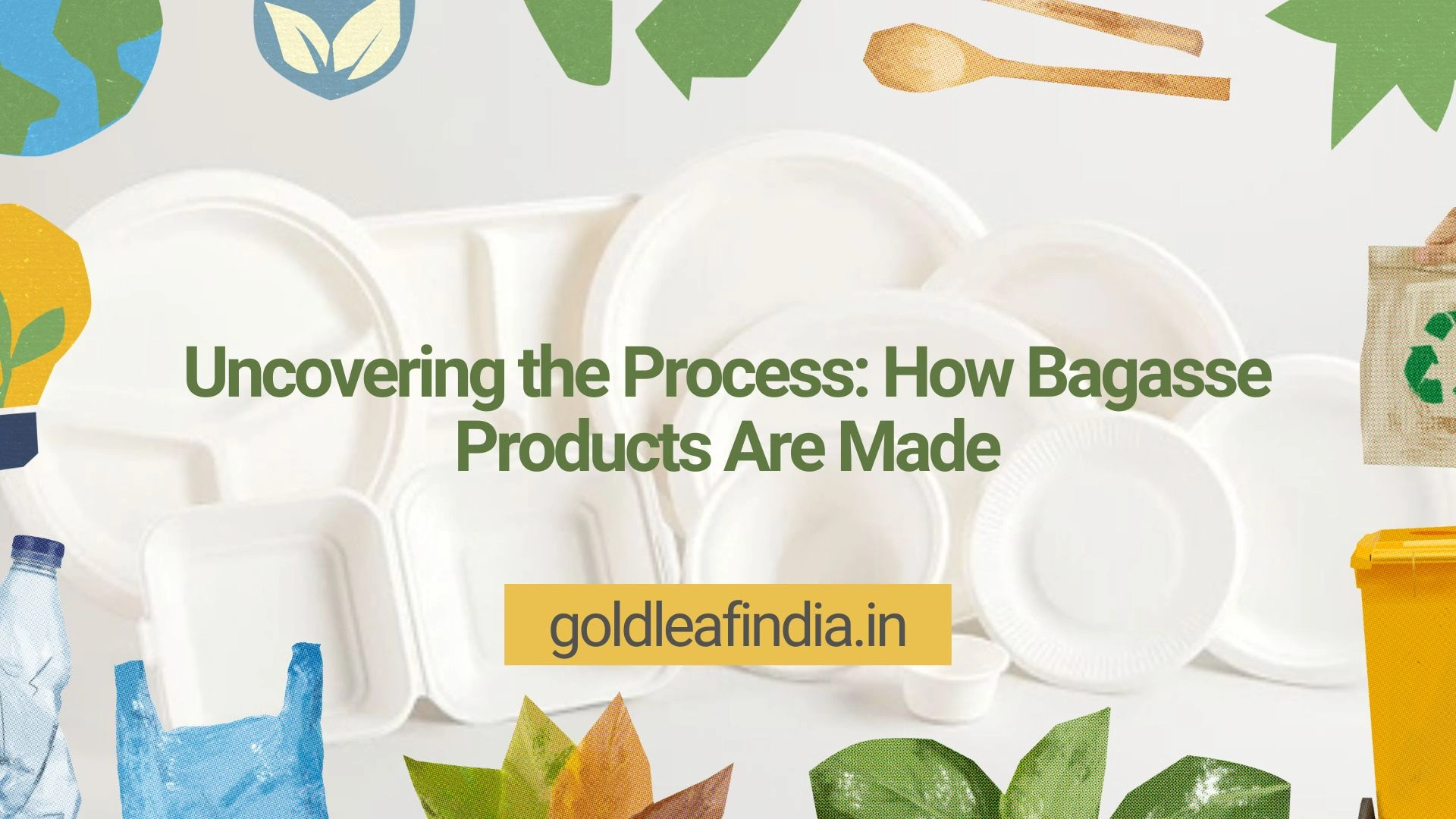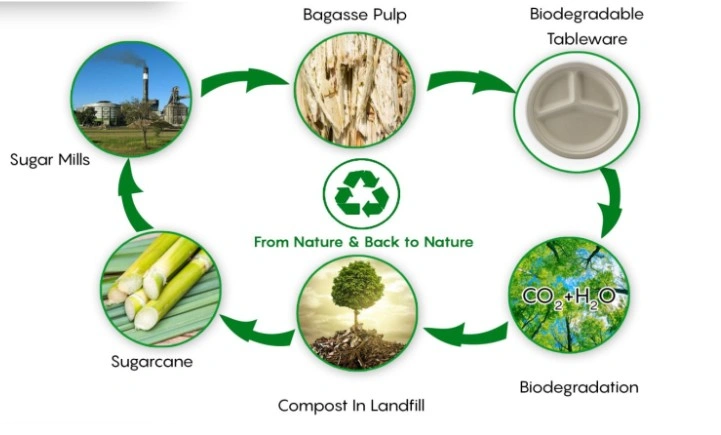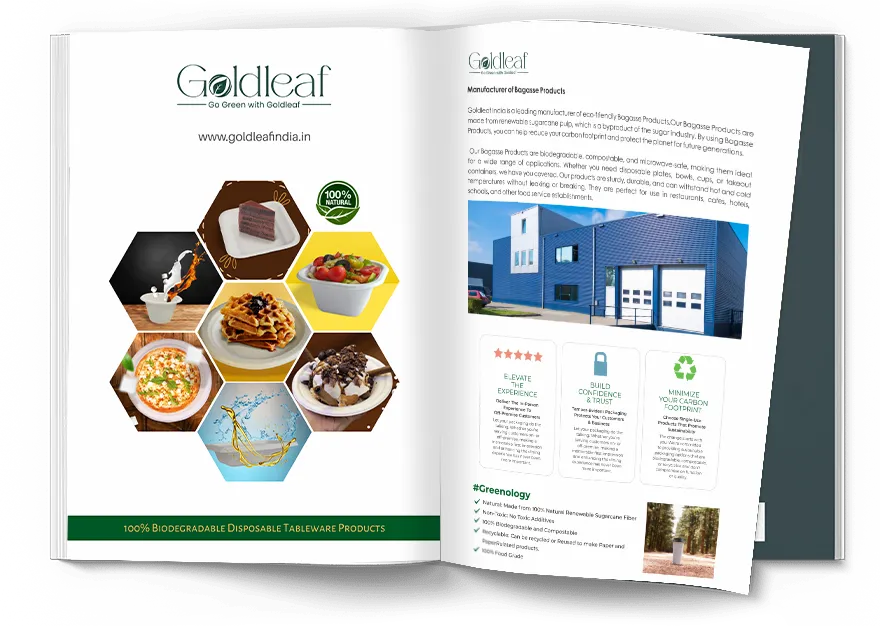Связаться с нашей командой

- 3342
In today's world, sustainability has become the prime concern for both consumers and industries. As one of the most innovative ways to address environmental concerns, bagasse has become fast-growing. Being biodegradable and compostable, this material has gained much attention in recent years as an alternative to harmful plastics and other kinds of non-renewable resources. From disposable plates to food containers, bagasse products are available to provide viable environmental options. But how, exactly, are these products made? We delve into this interesting process whereby bagasse gets transformed from agricultural waste to practical items we use in our everyday life.
What is Bagasse?
Before proceeding to the production process, it is important to first define what bagasse is. Bagasse refers to the fibrous residue which is produced once the juice has been extracted from the sugarcane stalks. When sugarcane has undergone processing, usually the pulp from the same is always discarded. This by-product is finding its way as a renewable raw material in the making of disposable products.
It is abundant, renewable, and naturally decomposes in about 90 days, which considerably reduces waste compared to plastic products that may take hundreds of years to break down. Therefore, it is a very good material for the manufacture of sustainable products.

1. The Collection of Sugarcane Waste
The processing of bagasse products actually begins in the sugarcane industry. Immediately after harvesting, the stalks are crushed to release the juice for sugar processing. The crushed sugarcane is composed of fibers, water, and cellulose and is called bagasse.
Traditionally, this leftover material was considered waste and was often burned, further polluting the air. With increasing demand for plastic alternatives that are easier on the environment, manufacturers began to recognize value in this fiber-filled pulp.
2. Cleaning and Drying the Bagasse
Bagasse is collected from sugarcane mills, followed by cleaning and drying. The cleaning process involves removing impurities that may still be enclosed within the pulp, such as dirt, sand, or small pieces of sugarcane. The bagasse is then dried down to a lower moisture content, making it easier to handle and manipulate. The material is dried in preparation for its transformation into a durable and malleable substance.
3. Pulping the Bagasse
After cleaning and drying, the bagasse is pulped. The fibrous material becomes fine pulp, similar to the way it does in paper manufacture. Water, or small amounts of totally biodegradable additives, sometimes makes for natural binding agents added in the pulp for better consistency.
Pulping is a process of ensuring that a fine, homogeneous material capable of molding into various shapes of products is developed. This pulp will be rich in cellulose, which is the critical component that will impart strength and durability to the bagasse products.
4. Molding the Pulp into Shapes
One of the main processes in developing products from bagasse involves molding. Pulp made from sugarcane fibers is transferred into pre-designed molds, which give the final product its shape. These molds are designed in various shapes according to an individual's desired item, such as plates, cups, food containers, bowls and many others.
The molding process typically involves the following steps:
• Pressing: The bagasse pulp is placed in a mold and pressed under high pressure into a dense, compact form.
• Heat Application: Heat is applied into the mold, aiding in the drying of pulp and solidifying the shape. The heat thus ensures the product gets strong and also able to hold both hot and cold food or liquid.
Some products, depending on their type and the complexity of the required structure, may require several pressing and heating stages in order to achieve the desired structure and resistance.
5. Drying and Finishing
After molding, the bagasse pulp is sent for a second drying process to remove the residual moisture. This will be very important for the strength and durability of the product. It may be dried in a drying machine or naturally, according to the scale of production.
The dried products undergo a quality inspection. Finishing is to ensure that all edges are smoothed out, any imperfections that might have appeared are dealt with, and a clean polished end product is achieved. It comes out as a hard, fully formed item ready for packaging and distribution.
6. Surface Coating (Optional)
Most of the time, bagasse products are treated with a natural coating on their surface to make the items more durable, such as being resistant when holding liquids or oily foods. The coating is usually made from biodegradable or compostable material, thereby furthering the product's environmental friendliness.
For example, bagasse food containers or cups would be subject to a thin treatment of bioplastic or plant-based wax that prevents water from seeping through the fibers, allowing products to maintain integrity in the case of being filled with hot liquids.
7. Quality Control and Packaging
In producing bagasse products, much like in any manufacturing process, there is strict quality control. Every single product undergoes a number of tests for strength, safety, and environmental acceptability. The products will be tested to hold liquids, resist heat, and also maintain their structural integrity under extreme conditions.
After passing quality checks, the products are prepared for packaging. Products in bagasse are normally packed in environmentally-friendly materials to ensure consistency with the sustainability goals of the product line in totality.
8. Distribution to the Market
After manufacturing, the bagasse products are then sold to wholesalers, retailers, and even to food service providers. Due to increasing demand, especially in the food packaging industry, the bagasse products have captured a wider market both for end-consumer use and for corporate use in search of eco-friendly alternatives for plastic and Styrofoam.
9. End of Life: Composting and Decomposition
One of the big advantages to the bagasse products is in the end-of-life impact. While plastic takes hundreds of years to break down, naturally, a bagasse product would break down in a few months under composting conditions. Once used, the product can be disposed of in industrial composting facilities or, in some cases, home compost bins.
Bagasse products do not emit any toxic chemicals or pollutants during decomposition and are considered a very friendly option for both consumers and enterprises.
Conclusion
The journey of bagasse-from the sugarcane fields to eco-friendly tableware-shows truly radical change. Products on the basis of agro-waste transform bagasse into one that exemplifies sustainability in all stages-from harvesting and pulping to molding and final production. Goldleaf achieves high-quality, biodegradable tableware by taking into consideration the current demands, ecologically conscious, easing pressure on our environment. Through commitment to sustainability and innovation, we now offer products that are not just functional but give way to a greener, cleaner future for all. Let's be part of that with Goldleaf and bring positive change one product at a time.
Frequently Asked Questions (FAQs)
1. Is bagasse safe for food contact?
Yes, bagasse is safe for both hot and cold food and is certified for food-grade use.
2. Can bagasse products be microwaved?
Most bagasse products are microwave-safe and can withstand heat without degrading.
3. How long does it take for bagasse products to decompose?
Bagasse products decompose in about 90 days under composting conditions.
4. Are bagasse products more expensive than plastic?
While initially more expensive, the environmental benefits and rising consumer demand for sustainable products are driving down costs.
5. Can bagasse be recycled?
Bagasse products are typically compostable rather than recyclable, as they are designed to break down naturally.
6. Where can I buy bagasse products?
Bagasse products are widely available through online retailers, eco-friendly stores, and food service suppliers.
- Продукция
- Bowl
- Clamshell
- Compartment Plate
- Plate
- Tea Cup
© 2024 , Goldleaf ,
Все права защищены.
Made & Managed by Lightlink Solutions




